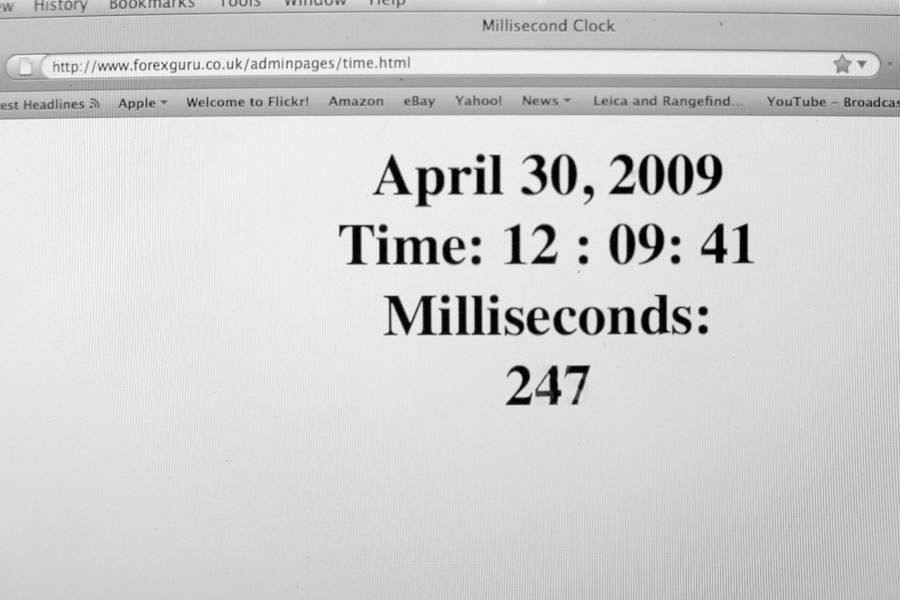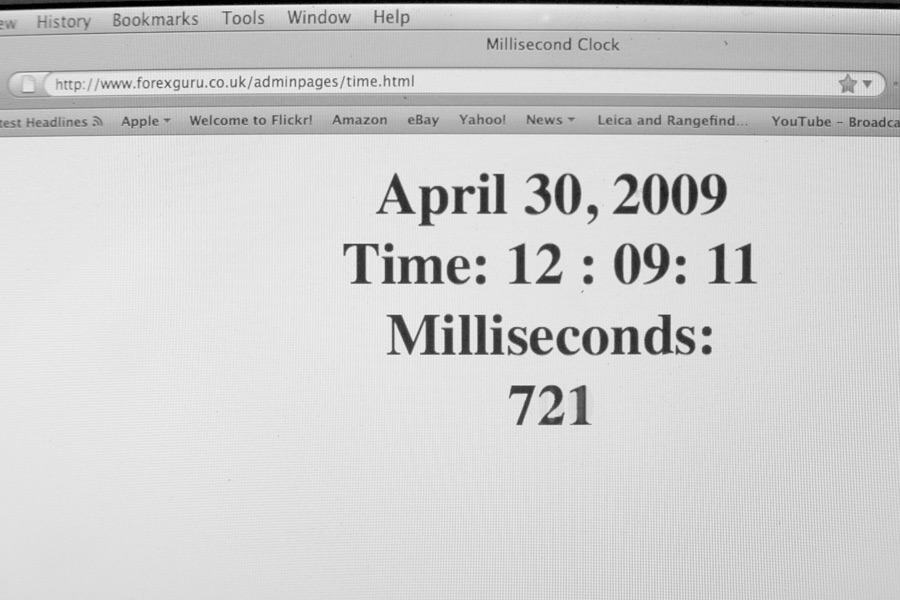Yes, the millisecond page is great! Lots of fun experiments are possible with this.
I couldn't try to duplicate the effect of longer time lag when focus-assist mode is on, because when getting ready to take a picture I habitually take up the slack in the release button; this cancels focus assist.
However, I was able to try something else that interests me, which was to see what extent it's possible to overcome shutter lag by practice.
This is common with most physical activities: If you wait to swing your tennis racquet until the ball reaches you, you're going to lose a lot of matches! You have to learn to anticipate -- to predict where the ball will be and start your swing in time to make contact with it. That's part of why practice improves your tennis game: your nerves and muscles get better at anticipating.
Since action photography also involves nerves and muscles, I figure the same principle should apply. No matter what "shutter lag" figure is computed via instrumented tests, you still have to take actual pictures (usually) by watching the action and then pressing the button with your finger at the proper time. The more you know about the type of action, and the more practice you have photographing it, the better you should be able to get at anticipating the action so the shutter goes off at the right time.
I also have a theory that a digital camera makes this learning process quicker because it gives you immediate feedback on how far off you are, helping you "groove your swing" to catch actions.
So, using the spiffy millisecond page, I tried a series of pictures using my Epson R-D 1 -- a camera which should have a short mechanical lag time, and with which I also have a lot of practice -- and also my G1, a camera which is still fairly new to me and which, subjectively, seems to be comparatively "laggy."
I took a series of 20 shots with each camera, watching the numbers change on the millisecond page and trying to catch the exact moment when 999 milliseconds turned over to zero milliseconds. I scored the results based on how far the captured numbers deviated from zero: negative numbers mean I shot early (too much anticipation) and positive numbers mean I shot late (not enough anticipation.)
I did 20 trials with each camera, dropped the two biggest outliers from each series, and graphed the rest; the results are attached.
As you can see, the mean error was smaller with the R-D 1: 36.9 milliseconds vs. 69.0 milliseconds.
However, the standard deviations are similar, meaning that my results with the G1 varied by about the same amount as the ones with the R-D 1. My biggest "miss" was similar with each camera: 211 ms with the G1, 194 ms with the R-D 1. And the total ranges are similar: 270 ms with the G1, 269 ms with the R-D 1.
If you look at the bars on the graph, you can see that after my first three tries, my timing with the G1 improved dramatically; as you move toward the right side of the graph, the G1 bars and R-D 1 bars become more similar in length.
I interpret all this to mean that with more practice, I should be able to learn to shoot peak action with the G1 just about as well as with the R-D 1, even though the G1 is perceptually "laggier." I suppose the next step would be to work my Nikon D300 into the mix... but it's late and my reaction times are probably shot by now...


